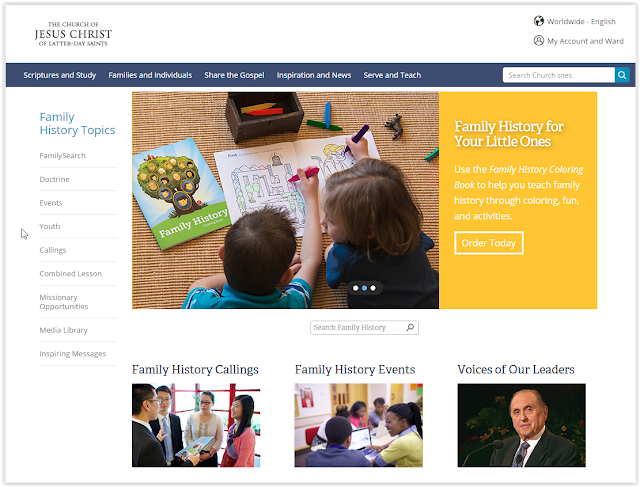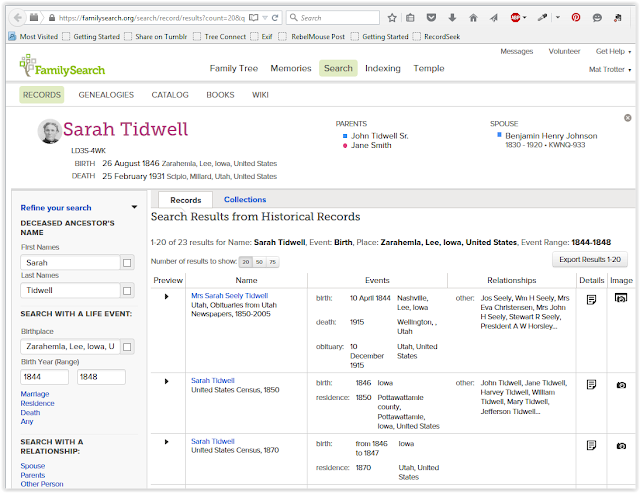My Find, Take, Teach class this month had few attendees. I am hoping the issue was the number of different activities that conflicted with the Class. December is a hard time to try and fit everything in. My youngest son had a band concert at the Junior High School so I even had to bump the start of the class half an hour.
I started out the class with a talk from Elder Dallin H. Oaks called, Family History: “In Wisdom and in Order”. I think that Elder Oaks has some great advise for those of us who are trying to help others to do their Family History work. I suggest that you read it but he gives a great summary in three points.
(1) All things should be done in wisdom and order. We should recognize that our members have many individual circumstances. Considering these, we should promote the mission of the Church in such a way as to accomplish the work of the Lord, not to impose guilt on his children.
(2) There is a time to every purpose under the heaven. There are many tasks to be performed in temple and family history work. We should encourage our members to make prayerful selection of the things they can do in their individual circumstances and in view of their current Church callings, being “diligent unto the end.”
(3) Each member should think about... the mission of the Church... as a lifelong personal assignment and privilege. Each should gauge his or her personal participation from time to time according to his or her own circumstances and resources, as guided by the Spirit of the Lord and the direction of priesthood leaders. [I edited this quote to make it shorter and because of the redefinition of the mission of the church.]We have to be careful when teaching others not to overwhelm them or make them feel guilty about what they have or haven't done. I try to give answers and information in a way to assist and help.
Family Discovery Center
If you have not have the chance to visit the Family Discovery Center in the Joseph Smith Memorial building on temple square you are missing out. Dennis Brimhall, former Managing Director of FamilySearch, liked to call it a Museum of Me. It is a different approach to getting people engaged in Family History without the usual roadblocks many beginners are challenged with.
It may be difficult to coordinate a visit to Temple Square for a group of people so I thought I would share with you two ways you can bring the Family Discovery Center to you and those you teach.
RootsMapper
RootsMapper is an app that uses the data in FamilySearch to plot on a map the places where your ancestors were born and the migration of your family across the globe.
I have a blog post that goes into a little more detail about the app. This is very similar to one of the booths that you can use at the Family Discovery Center. One advantage to using RootsMapper is that you can customize your search for different generations. You can also search from one of the pinpoints on the map. This would be a fun way to introduce your others to their families.
You will need to have an active FamilySearch account and to have linked yourself to some ancestors for this to work. Members of the L.D.S. Church who have pioneer ancestors will have the best results.
Forebears.io
Forbears.io is a website that specializes in surname and related resources.
I have a blog post with more specific information about the website. Although the presentation of information is not at all like in the Family Discovery Center the general information about a person's surname is similar. This website engages users in learning about their family name through maps and other information. This would also be a fun way to introduce someone to information about their family.
GEDCOM Files
We discussed the use of GEDCOM files in websites and other software. I was surprised that more people did not know about GEDCOM files and how they are used. I made a short blog post about them. I believe this is something we may discuss in the future. I believe this is key to understanding how we can use data as a tool to find for family members for our Family History.
Turning of Our Hearts


















































